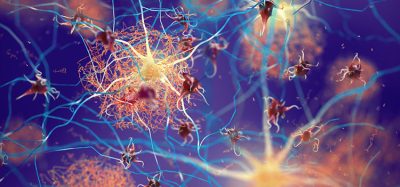Measuring microRNAs in blood may indicate dementia risk
Posted: 14 October 2021 | Anna Begley (Drug Target Review) | No comments yet
Researchers identified three microRNAs whose levels were associated with mental performance in cells, mice and humans.


A new study from the German Centre of Degenerative Diseases (DZNE) and the University Medical Center Göttingen (UMG), both Germany, have identified molecules in the blood that can indicate impending dementia. The biomarker is based on measuring levels of so-called microRNAs. Furthermore, the scientists aim to develop a simple blood test that can be applied in routine medical care to assess dementia risk. According to the study data, microRNAs could potentially also be targets for dementia therapy.
ARTICLE: An integrated vaccination approach to neurodegeneration
“When symptoms of dementia manifest, the brain has already been massively damaged. Presently, diagnosis happens far too late to even have a chance for effective treatment. If dementia is detected early, the odds of positively influencing the course of the disease increase,” commented Professor André Fischer who led the study. “We need tests that ideally respond before the onset of dementia and reliably estimate the risk of later disease. In other words, tests that give an early warning. We are confident that our current study results pave the way for such tests.”
The biomarker that Fischer and his colleagues have found, described in EMBO Medicine, is based on measuring so-called microRNAs in the blood. MicroRNAs are molecules with regulatory properties: they influence the production of proteins and thus a key process in the metabolism of every living being. “There are many different microRNAs and each of them can regulate entire networks of interdependent proteins and thus influence complex processes in the organism… We wanted to find out whether there are specific microRNAs whose presence in the blood correlates with mental fitness,” Fischer continued.
The researchers identified three microRNAs in humans, mice and cell cultures whose levels were associated with mental performance. In mice, this score increased even before the rodents started to show mental decline – regardless of whether this was due to age or because they developed symptoms similar to those of Alzheimer’s. Further evidence came from patients with mild cognitive impairment (MCI). Of those in whom the blood marker was highly elevated, about 90 percent developed Alzheimer’s disease within two years. “We therefore see an increased blood level of these three microRNAs as a harbinger of dementia,” Fischer said. “We estimate that in humans this biomarker indicates a development that is about two to five years in the future.”
In their studies on mice and cell cultures, the researchers also found that the three identified microRNAs influence inflammatory processes in the brain and “neuroplasticity”. This suggests that the three microRNAs are more than warning signals. “In our view, they are not only markers, but also have an active impact on pathological processes. This makes them potential targets for therapy,” Fischer added. “Indeed, we see in mice that learning ability improves when these microRNAs are blocked with drugs. We have observed this in mice with age-related mental deficits, as well as in mice with brain damage similar to that occurring in Alzheimer’s disease.
NEWS: Discovery unveils genetic risk factor shared by Alzheimer’s and COVID-19
“In further studies, we aim to validate this biomarker clinically. In addition, we intend to develop a simple test procedure for point-of-care screening,” concluded Fischer. “Our goal is to have a low-cost test, similar to the rapid test for SARS-CoV-2 with the difference that for our purposes, you would need a drop of blood. Such a test could be used during routine check-ups in doctors’ practices to detect an elevates risk of dementia early on. Individuals with suspicious results could then undergo more elaborate diagnostics.”
Related topics
Drug Targets, Genomics, In Vitro, In Vivo, Neuroprotection, Neurosciences, RNAs, Small molecule, Targets, Therapeutics
Related conditions
Alzheimer's disease (AD), Dementia
Related organisations
German Centre of Degenerative Diseases (DZNE), University Medical Center Göttingen (UMG)
Related people
Professor André Fischer








